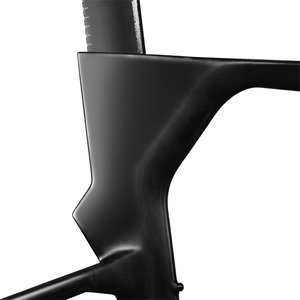(8635 products available)































































































































































































































Stem Fsa Carbon is available in numerous varieties, including:
Stem FSA carbons are widely used in various industries and applications due to their unique properties and advantages. Here are some key usage scenarios:
To choose the right stem FSA carbon, one must consider some factors that can help make the decision more rational and effective. Below are some of the factors to consider:
Riding Style and Type of Bicycle
Carbon stems come in various designs and sizes optimized for different riding styles and types of bikes. For instance, if one is into road cycling or competitive racing, a lightweight and aerodynamically optimized stem designed for maximum stiffness and minimum weight will be ideal. On the contrary, for mountain biking or gravel riding, a stem designed to withstand higher loads and offer more adjustability, such as rise or angle, may be more suitable.
Compatibility
It is crucial to ensure that the stem is compatible with the bike's fork and steerer tube diameter. The steerer tube is the vertical part of the bike frame that the stem is attached to, and its diameter can vary depending on the type of bike. Most stems have a standard diameter, but it is always good to double-check to ensure no compatibility issues arise.
Durability and Vibration Damping
Carbon stems are known for their durability and ability to dampen vibrations. Carbon fiber absorbs vibrations better than aluminum or other metals, leading to a more comfortable ride, especially on rough terrain or long distances. This vibration-damping quality also reduces rider fatigue and increases overall performance.
Aerodynamics and Weight
Carbon stems are lighter than aluminum stems, which contributes to the overall weight savings. While the weight difference between a carbon and aluminum stem might seem small, it can add up significantly in terms of overall bike weight, impacting performance and speed. Additionally, carbon stems are often designed to be more aerodynamically efficient, reducing drag and further enhancing speed potential.
Adjustability and Angle
Adjustability is a key factor when choosing a stem, especially for riders who require specific positioning to achieve optimal performance. Adjustable stems allow changes to be made to the handlebar height, reach, and angle, enabling a customized fit that can improve comfort and control. This adjustability is particularly beneficial for riders who participate in different types of terrain or those who have not yet settled on a permanent bike setup.
The stem FSA carbon comes in different designs that offer various functions and features. Here are some of them:
Functions: All the designs of the stem FSA carbon have one common function, which is to provide a safe mounting point for the handlebar and fork. This function is achieved through various functions and features.
Some of the features are:
Durability & Lightweight: to be precise, carbon fiber has a high strength-to-weight ratio, making it an ideal choice for performance-oriented bikes. This ensures the stem is lightweight, minimizing overall bike weight, and durable enough to withstand the stresses and strains of cycling without breaking or failing.
Customization: Customization is another stem feature that helps to enhance the performance of a bike. Different brands provide different customization options, such as the ability to adjust the angle and length to suit individual riders' needs and preferences. This flexibility allows for more comfortable riding positions, improving the bike's overall performance and reducing the likelihood of strain or injury to the rider.
Features: All designs of stem FSA carbon have one common function, which is to provide a safe mounting point for the handlebar and fork. This function is achieved through various functions and features.
Some of the features are:
Durability & Lightweight: to be precise, carbon fiber has a high strength-to-weight ratio, making it an ideal choice for performance-oriented bikes. This ensures the stem is lightweight, minimizing overall bike weight, and durable enough to withstand the stresses and strains of cycling without breaking or failing.
Customization: Customization is another stem feature that helps to enhance the performance of a bike. Different brands provide different customization options, such as the ability to adjust the angle and length to suit individual riders' needs and preferences. This flexibility allows for more comfortable riding positions, improving the bike's overall performance and reducing the likelihood of strain or injury to the rider.
Designs: The stem FSA carbon can also be designed to provide a better riding experience. For example, some designs are made with a zero-degree rise angle for aggressive riding positions. Additionally, other designs are made with a 10-degree rise angle for moderately comfortable riding positions. More so, other designs are made with a 20-degree rise angle for a comfortable riding position.
Also, the stem can be designed to come in different colors, which allows riders to choose their preferred color that complements their bike.
Q: What is the difference between FSA and Non-FSA stems?
A: The main difference between FSA and Non-FSA stems is that FSA stem allows the use of grease to adjust the bolt tension. On the other hand, Non-FSA stems uses a dry application when adjusting bolt tension. Using grease on a non-FSA stem can lead to over-tightening and, ultimately, stem failure.
Q: Why are stem cells important?
A: Stem cells are important because they have the potential to develop into many different cell types in the body. They can also help repair damage or disease-affected tissues and organs.
Q: What is the purpose of a stem in a bike?
A: The stem's primary purpose is to connect the handlebars to the fork and front wheel of the bike. It plays a significant role in a bicycle's steering, stability, and overall ride quality.
Q: What is the difference between a stem and a steer tube?
A: A stem is a metal part that connects the handlebars to the fork of a bike, while the steerer tube is a metal or carbon tube that runs through the fork and connects the front wheel to the bike's frame.